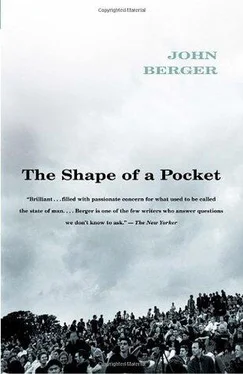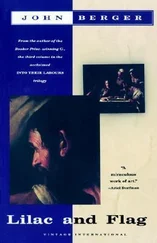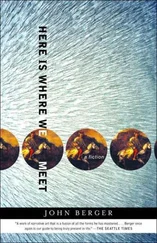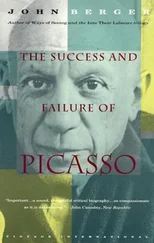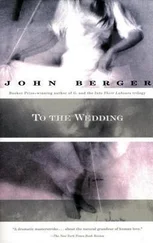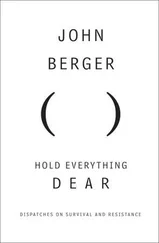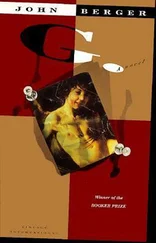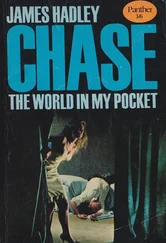I had a dream in which I was a strange dealer: a dealer in looks or appearances. I collected and distributed them. In the dream I had just discovered a secret! I discovered it on my own, without help or advice.
The secret was to get inside whatever I was looking at — a bucket of water, a cow, a city (like Toledo) seen from above, an oak tree, and, once inside, to arrange its appearances for the better. Better did not mean making the thing seem more beautiful or more harmonious; nor did it mean making it more typical, so that the oak tree might represent all oak trees; it simply meant making it more itself so that the cow or the city or the bucket of water became more evidently unique!
The doing of this gave me pleasure and I had the impression that the small changes I made from the inside gave pleasure to others.
The secret of how to get inside the object so as to rearrange how it looked was as simple as opening the door of a wardrobe. Perhaps it was merely a question of being there when the door swung open on its own. Yet when I woke up, I couldn’t remember how it was done and I no longer knew how to get inside things.
The history of painting is often presented as a history of succeeding styles. In our time art dealers and promoters have used this battle of styles to make brand-names for the market. Many collectors — and museums — buy names rather than works.
Maybe it’s time to ask a naive question: what does all painting from the Palaeolithic period until our century have in common? Every painted image announces: I have seen this , or, when the making of the image was incorporated into a tribal ritual: We have seen this. The this refers to the sight represented. Non-figurative art is no exception. A late canvas by Rothko represents an illumination or a coloured glow which derived from the painter’s experience of the visible. When he was working, he judged his canvas according to something else that he saw.
Painting is, first, an affirmation of the visible which surrounds us and which continually appears and disappears. Without the disappearing, there would perhaps be no impulse to paint, for then the visible itself would possess the surety (the permanence) which painting strives to find. More directly than any other art, painting is an affirmation of the existent, of the physical world into which mankind has been thrown.
Animals were the first subject in painting. And right from the beginning and then continuing through Sumerian, Assyrian, Egyptian and early Greek art, the depiction of these animals was extraordinarily true. Many millennia had to pass before an equivalent ‘life-likeness’ was achieved in the depiction of the human body. At the beginning, the existent was what confronted man.
The first painters were hunters whose lives, like everybody else’s in the tribe, depended upon their close knowledge of animals. Yet the act of painting was not the same as the act of hunting: the relation between the two was magical.
In a number of early cave paintings there are stencil representations of the human hand beside the animals. We do not know what precise ritual this served. We do know that painting was used to confirm a magical ‘companionship’ between prey and hunter, or, to put it more abstractly, between the existent and human ingenuity. Painting was the means of making this companionship explicit and therefore (hopefully) permanent.
This may still be worth thinking about, long after painting has lost its herds of animals and its ritual function. I believe it tells us something about the nature of the act.
The impulse to paint comes neither from observation nor from the soul (which is probably blind) but from an encounter: the encounter between painter and model — even if the model is a mountain or a shelf of empty medicine bottles. Mont St Victoire as seen from Aix (seen from elsewhere it has a very different shape) was Cezanne’s companion.
When a painting is lifeless it is the result of the painter not having the nerve to get close enough for a collaboration to start. He stays at a copying distance. Or, as in mannerist periods like today, he stays at an art-historical distance, playing stylistic tricks which the model knows nothing about.
To go in close means forgetting convention, reputation, reasoning, hierarchies and self. It also means risking incoherence, even madness. For it can happen that one gets too close and then the collaboration breaks down and the painter dissolves into the model. Or the animal devours or tramples the painter into the ground.
Every authentic painting demonstrates a collaboration. Look at Petrus Christus’ portrait of a young girl in the Staadiche Museum of Berlin, or the stormy seascape in the Louvre by Courbet, or the mouse with an aubergine painted by Tchou-Ta in the seventeenth century, and it is impossible to deny the participation of the model. Indeed, the paintings are not first and foremost about a young woman, a rough sea or a mouse with a vegetable; they are about this participation. ‘The brush,’ wrote Shitao, the great seventeenth-century Chinese landscape painter, ‘is for saving things from chaos.’
It is a strange area into which we are wandering and I’m using words strangely. A rough sea on the northern coast of France, one autumn day in 1870, participating in being seen by a man with a beard who, the following year, will be put in prison! Yet there is no other way of getting close to the actual practice of this silent art, which stops everything moving.
The raison d’être of the visible is the eye; the eye evolved and developed where there was enough light for the visible forms of life to become more and more complex and varied. Wild flowers, for example, are the colours they are in order to be seen. That an empty sky appears blue is due to the structure of our eyes and the nature of the solar system. There is a certain ontological basis for the collaboration between model and painter. Silesius, a seventeenth-century doctor of medicine in Wrocklau, wrote about the interdependence of the seen and the seeing in a mystical way:
La rose qui contemple ton oeil de chair
A fleuri de la sorte en Dieu dans l’éternel
How did you become what you visibly are? asks the painter.
I am as I am. I’m waiting, replies the mountain or the mouse or the child. What for?
For you, if you abandon everything else.
For how long?
For as long as it takes.
There are other things in life.
Find them and be more normal.
And if I don’t?
I’ll give you what I’ve given nobody else, but it’s worthless, it’s simply the answer to your useless question.
Useless?
I am as I am.
No promise more than that?
None. I can wait for ever.
I’d like a normal life.
Live it and don’t count on me.
And if I do count on you?
Forget everything and in me you’ll find — me!
The collaboration which sometimes follows is seldom based on good will: more usually on desire, rage, fear, pity or longing. The modern illusion concerning painting (which post-modernism has done nothing to correct) is that the artist is a creator. Rather he is a receiver. What seems like creation is the act of giving form to what he has received.
Bogena and Robert and his brother Witek came to spend the evening because it was the Russian new year. Sitting at the table whilst they spoke Russian, I tried to draw Bogena. Not for the first time. I always fail because her face is very mobile and I can’t forget her beauty. And to draw well you have to forget that. It was long past midnight when they left. As I was doing my last drawing, Robert said: This is your last chance tonight, just draw her, John, draw her and be a man!
Читать дальше
